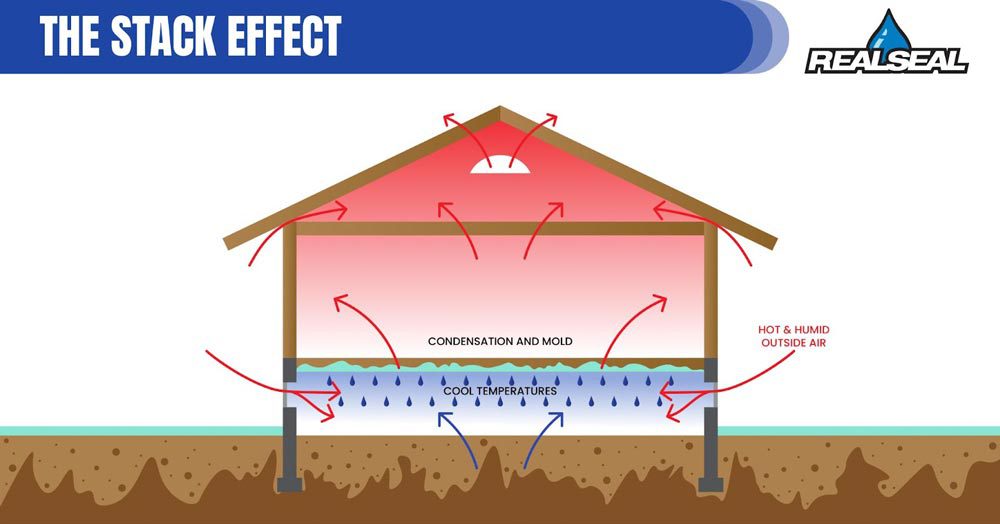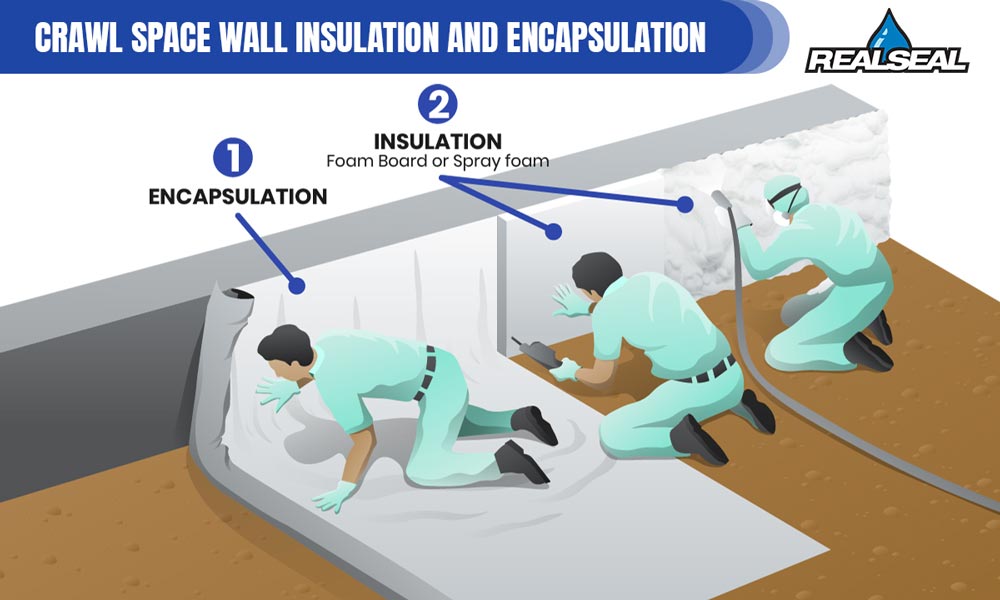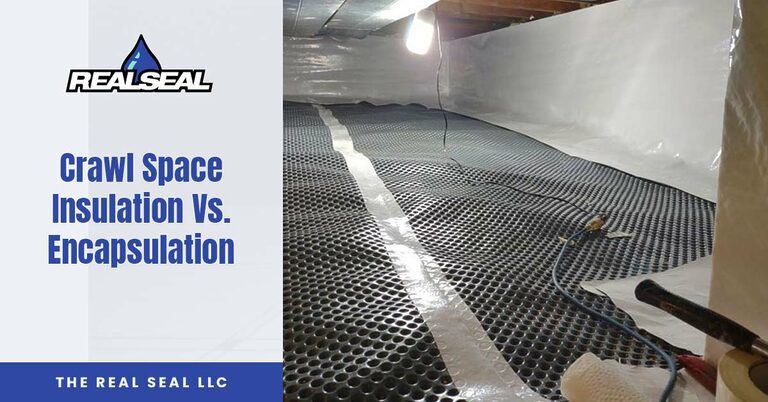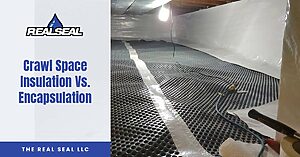The crawl space is one of the most common foundation types, but it is also a foundation type that can sometimes experience problems. Like anything that is “out of sight, out of mind,” the crawl space can run into issues, and we may not even be aware of them for quite some time.
Many of the issues associated with a crawl space involve water. Problems can also be connected to the surrounding soil type. In either case, you may find that problems are happening, including higher energy bills due to a lack of insulation and other issues.
At some point or another, you may consider upgrading your crawl space and doing some repairs so that it is less likely to experience those problems. That is where you have to decide whether you are going to insulate the crawl space or have a crawl space encapsulation completed. What’s the difference between those options, and how can you make the right choice?
What Is a Crawl Space?
Crawl spaces are common in many areas, but especially in areas where the ground is sloping or uneven. They may also be considered when the soil conditions would make it difficult for a full basement.
A crawl space is a type of foundation, existing as a space between the bottom of the house and any ground underneath it. Typically, a crawl space is not high enough to stand upright, so you may have to crawl through it.
Having a crawl space provides several benefits compared to building a home on a slab. It gives you easier access to electrical, plumbing, and HVAC systems that can conveniently be run under the house and above the ground. Some people will also use a crawl space for storage.
Even though you may enjoy the benefits of having a crawl space, if they aren’t maintained and designed properly, problems can occur. These issues can include anything from mold to foundation failure.
Properly sealing the crawl space is a good choice when you experience any problems. It can also be used to head off any issues that may occur in the future. Options can include:
- Sealing and ventilating the crawl space.
- Adding a dehumidifier.
- Wrapping the walls and floors with a thick vapor barrier.
What Is Crawl Space Insulation?
One option that can help insulate the home from the cold, damp air below it is to insulate the crawl space. This is typically done by adding insulation to the area under the floor and above the crawl space.
Insulating the crawl space can help insulate the home, and may improve the comfort in the living space. While it might provide those benefits, however, it is not a foolproof option.
Most people don’t know that approximately 50% of the air in their living space comes from the crawl space. The air exchange is due to something known as the “stack effect.” This occurs when warm air rises and exits through the attic, leaving a vacuum and pulling air from the crawl space to fill it.

In other words, insulating the crawl space has benefits, but it is not the best option if you want to experience those benefits to the fullest.
Benefits of Crawl Space Insulation
If you are considering crawl space insulation, it’s good to know its benefits. We will first consider those benefits, and then the benefits that come with crawl space encapsulation.
Reducing humidity: One of the biggest problems associated with the crawl space is high humidity. This can cause many different issues, including wood rot, mold growth, and increased energy bills.
Depending on how the crawl space is insulated, there can be a reduction in the humidity that will affect both the crawl space and the living space in your home.
Reduced energy bills: Typically, insulating the crawl space means you are insulating the space between the crawl space and the living space. Doing so keeps cold, moist air from entering the home through the floor. This can significantly reduce your energy costs all year round.
Home value: If you are considering selling your home, then insulating the crawl space can improve its value. Since many people looking to buy homes are also looking for energy efficiency, insulating the crawl space can be beneficial.
What Is Crawl Space Encapsulation?
Many homeowners blur the line between crawl space insulation and crawl space encapsulation. There are some significant differences and additional benefits that come when you have the crawl space encapsulated.
Encapsulating the crawl space means completely sealing the area under the home using several methods, including insulation, vapor barriers, and a dehumidifier. As a result of having this done, homeowners can enjoy the improvement in air quality and energy efficiency. They also experience some other benefits we will describe below.
Having your crawl space encapsulated is a great way to improve your home. However, there may also be other work to do before the encapsulation process takes place.
If water is a problem, you may have to remove the water and install a field drain system. This drain will remove any water by running it to a sump pit, where it can be pumped out of the crawl space by a sump pump. Such a drainage system can also reduce water in the surrounding soil, lowering hydrostatic pressure and the possibility of foundation failure.
After any repairs, the crawl space will be sealed so that no outside air can enter through gaps and openings. A moisture-resistant barrier (typically a thick sheet of poly sheeting) is installed to cover the floors and walls. Essentially, the vapor barrier seals the crawl space from the outside world.
After the floors and walls have been wrapped, a dehumidifier is installed. The dehumidifier will help reduce any moisture in the crawl space, which will positively impact the area you live in from day to day.
Benefits of Crawl Space Encapsulation
The benefits of encapsulating the crawl space are significant. They may differ from one home to another, depending on the problems you are experiencing, but they are likely to include the following:
Reducing moisture: Both the humidity and any standing water will be a thing of the past once the crawl space is encapsulated. This will be of benefit for anything in the crawl space, as well as for the entire home.
Indoor air quality: Since approximately 50% of the air you breathe in your home comes from the crawl space, improving the air quality in the crawl space will improve the air quality in the entire house. This especially benefits those suffering from respiratory problems like asthma or COPD.
Eliminating mold: Extensive mold growth is often seen in unprotected crawl spaces. After having the crawl space encapsulated, the possibility of mold is significantly reduced because you are reducing moisture (which mold needs to grow).
Improved energy bills: Lowering the humidity in the crawl space means you will have lower humidity throughout your home. Since dryer air is easier to heat and cool, you will see a reduction in your energy bills year-round.
Infestations: One of the bigger issues associated with the crawl space is when insects and rodents invade it. The crawl space is a convenient and ideal location for these infestations to occur, and they sometimes come into the living space too.
Storage space: Once you have your crawl space encapsulated, you will have a clean, dry, and safe environment where you can store items.
What’s the Difference Between Crawl Space Insulation and Crawl Space Encapsulation?
To sum things up, there are significant differences between the process of crawl space insulation and crawl space encapsulation. Both can be beneficial, but one is preferred.
Insulating the crawl space means adding insulation to reduce heat transfer between the crawl space and the living space. It can improve your home’s energy efficiency, but it will not always protect the crawl space from problems.

Crawl space encapsulation is different because it seals the crawl space and provides a moisture barrier between the crawl space and the outside environment. It will control the humidity level in the crawl space–and therefore, the humidity level throughout the entire home.
The best thing to do is to speak with a qualified contractor about the options and benefits available. You can then make an informed decision as to which is best suited for your home and your family.






